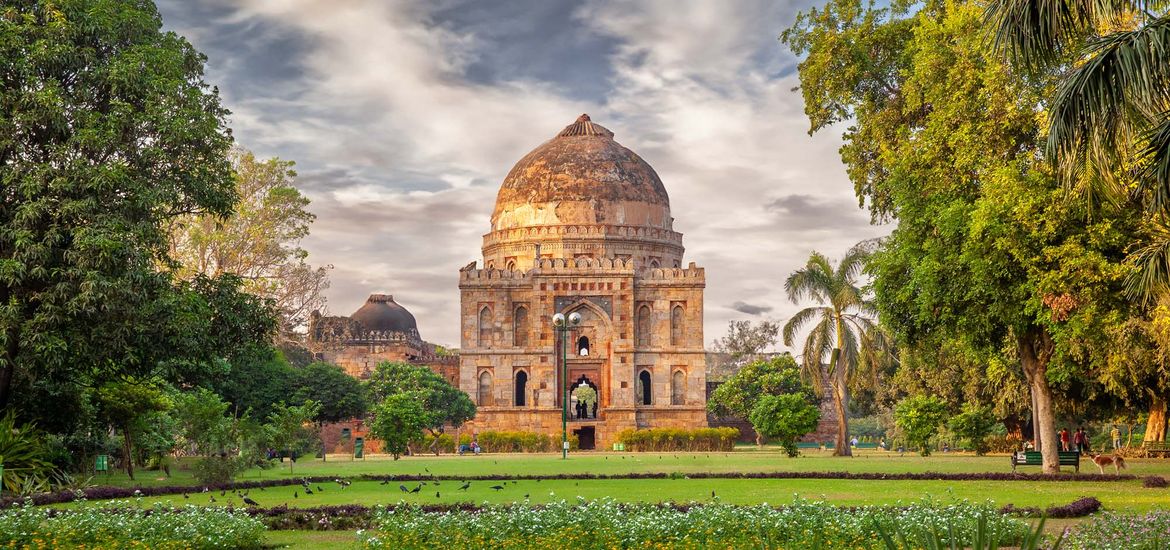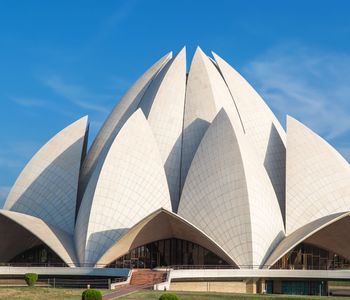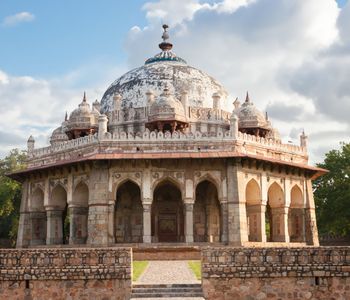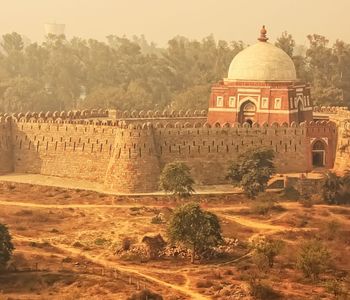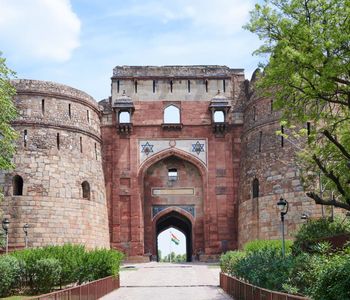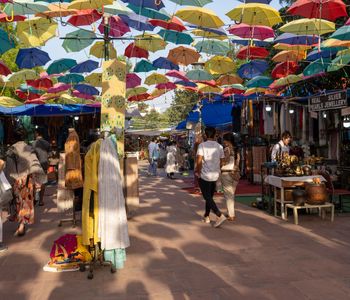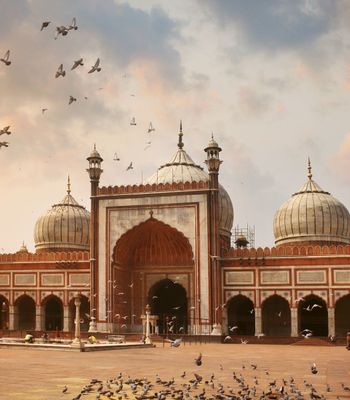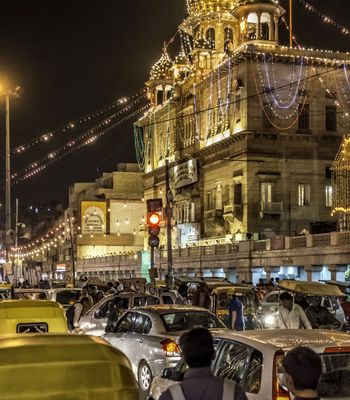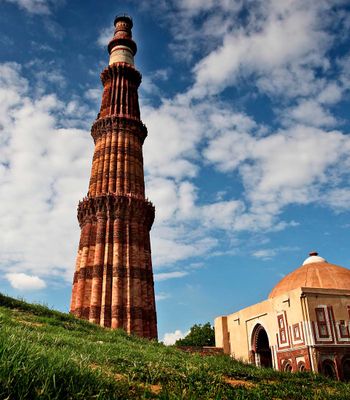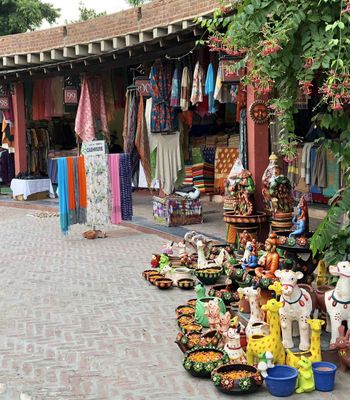Amidst the rush, traffic, and hustle of the city, Lodhi Garden brings rhythm, soul, and stories written in stone to Delhi. It’s 90 acres of peaceful paradise with ancient tombs, architectural elegance, and nature’s calm.
Here, you can revel in history and nature or simply sit and practice deep thinking. Lodhi Garden isn’t just a park for a quick stroll but instead a journey into the city’s history book.
A Garden of Kings: The Dynasties Buried Beneath
Walking around Lodhi Garden isn’t just about being surrounded by flowering trees and majestic domes but also the rulers of the Sayyid and Lodi dynasties resting beneath them. Some notable legacy-filled tombs within the garden are:
- Tomb of Mohammed Shah: Mohammed Shah’s son, Ala-ud-din Alam Shah, constructed this octagonal tomb in 1444. Indo-Islamic architectural design elements are used to decorate the tomb. From ornate arches and lotus motifs to delicate plasterwork, you can still see it all standing strong centuries later.
- Tomb of Sikandar Lodi: It was built in 1517 by Ibrahim Lodi, the son of the second Lodi ruler. It’s also an octagonal tomb but set within a charbagh (four-squared garden). The tomb’s architecture is a fusion of Persian aesthetics and early Mughal sensibilities.
Until the 1930s, the area was comprised of villages surrounding the tombs. In 1936, under Lady Willingdon’s supervision, the wife of the Viceroy of India, the villages were relocated, and the place was designed as a public park.
While it was previously named Lady Willingdon Park, it was renamed Lodhi Garden in 1947.
Stone Chronicles: Lodhi Garden’s Enduring Monuments
This nature ballroom has stone structures that tell stories taken from the pages of the history of Delhi and take you on a stroll through Mughal Engineering.
Bara Gumbad
This massive dome that dominates the skyline dates back to 1490. You can witness it in all its glory during the golden hour.
The purpose of Bara Gumbad has remained a part of scholarly debate for a long time and is often confused as a tomb by visitors. Since next to it are a mosque and a guesthouse, historians have a hunch that it was either the gateway to the mosque or part of a larger structure.
Shish Gumbad
Shish Gumbad stands right opposite the Bara Gumbad. As we all know, “Shish” means glass, and this was chosen as its name as this building once shimmered with glazed blue tiles.
While the tiles have faded, and we only have remnants, the sense of mystery around the structure is still fresh. We still don’t know anything about the remains of the unknown family from the Lodi era that lies buried inside.
Athpula Bridge
Other than the tombs, Lodhi Garden also preserves Athpula Bridge, a relic from Emperor Akbar’s reign. With its seven elegant arches and eight piers, it stands as an example of the Mughals’ engineering prowess and eye for beauty and precision.
Beyond the Tombs: What Brings Lodhi Garden to Life Today
Lodhi Garden can be described as a landscape painting come to life. Here are the features that breathe tranquillity into the heart of Delhi:
- 7,000+ Trees: This green wonderland speaks directly to the heart of a nature enthusiast. It is filled with native and exotic plants ranging from neem and peepal to eucalyptus.
- Birdwatcher’s Paradise: You can spot parrots, mynas, drongos, and even hornbills here sometimes. So don’t forget to pack your binoculars!
- Seasonal Blossoms: In winter and spring, you can witness the garden bursting with the colours of bougainvillea and marigolds.
- Recreational Spaces: The garden has become a favourite spot amongst locals for morning walks, yoga, meditation, and even picnics. You can join in or simply soak in the breezy mornings.
Lodhi Garden is where heritage doesn’t lie in museums or fragments preserved behind the glass but under the skies and towering trees. This place helps you slow down and experience history in whispers, unlike long lectures in class. Lodhi Garden is a prime example of a place that doesn’t need an entry price to feel priceless.
